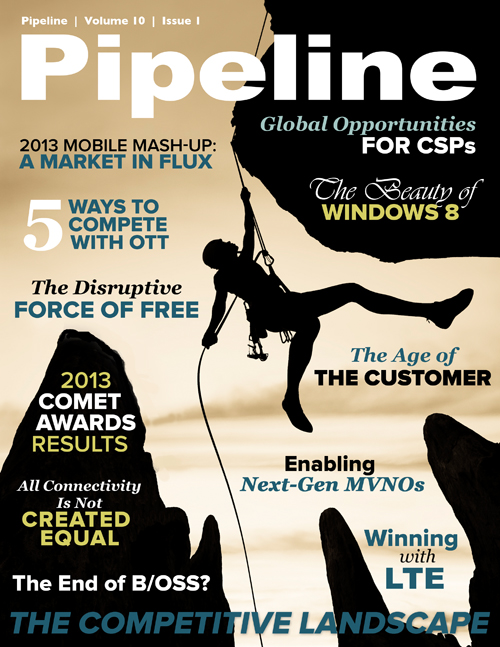A Glance at Global LTE Strategies and Momentum
By: Susana Schwartz
 This year may end up being a critical one for LTE momentum.
Deloitte predicts that 200-plus carriers spanning a total of 75 countries will introduce an LTE network by the time 2013 has come to a close, and subscriptions are expected to climb north of
200 million, which is 17 times greater than the number of subscriptions that existed just two years ago.
This year may end up being a critical one for LTE momentum.
Deloitte predicts that 200-plus carriers spanning a total of 75 countries will introduce an LTE network by the time 2013 has come to a close, and subscriptions are expected to climb north of
200 million, which is 17 times greater than the number of subscriptions that existed just two years ago.The Global Mobile Suppliers Association (GSA) estimates there are now 145 commercial LTE networks deployed in 66 countries. The majority of LTE revenues have thus far been generated in North American and Asian markets. So far, the world leaders in terms of subscriber numbers have been Verizon, NTT Docomo, SK Telecom, Bharti Airtel, and China Mobile.
Heavy Reading’s recent white paper “LTE Deployment Strategies: Network Overlay vs. Single RAN” indicates that the United States, South Korea and Japan are gaining the most momentum, with respective totals of approximately 33 million subscriptions, 16 million and 10 million LTE subscriptions accounted for in 2012. Operators in Europe and the emerging markets of Latin America have experienced slower momentum but are now in the midst of launching LTE networks, as are several countries in Southeast Asia.
Downloads
- Testing the Cloud
- Cloud Connectivity Management
- PTP Test Applications
- TCP Testing and Methodologies
-
W2CM Smart Replay
Web Links
Live LTE Network Troubleshooting Webinar
Network Forecast—Mostly Cloudy: Clearing the Air about Cloud Service Maintenance and Delivery Webinar
Visualizing LTE Rollout in Real Time
About EXFO
EXFO is among the leading providers of next-generation test and service assurance solutions for wireline and wireless network operators and equipment manufacturers in the global telecommunications industry. The company offers innovative solutions for the development, installation, management and maintenance of converged, IP fixed and mobile networks—from the core to the edge. Key technologies supported include VDSL2, ADSL2+, 3G, 4G/LTE, IMS, Ethernet, OTN, FTTx, and various optical technologies accounting for more than 35% of the portable fiber-optic test market. EXFO has a staff of approximately 1700 people in 25 countries, supporting more than 2000 telecom customers worldwide. EXFO is listed on the NASDAQ and TSX stock exchanges. For more information, visit www.EXFO.com.
Like their brethren in first-mover markets, operators in secondary markets are responding to the growth of sophisticated LTE smartphones and tablets and demands for mobile broadband. As subscribers embrace data-intensive multimedia applications like video streaming, content downloading and gaming, many operators will buy spectrum to offer more mobile-data options built around speed and service sophistication.
TD-LTE and FD-LTE considerations
Whether implemented in aggressive LTE markets or not, the developments made in time-division LTE (TD-LTE) and frequency-division LTE (FD-LTE) will help to further drive momentum. For example, TD-LTE will probably remain the fastest way for carriers to start competing in emerging markets. Juniper Research anticipates China, Japan and India will embrace the technology – a prediction already supported by China Mobile’s recent announcement of a $6.7 billion investment in TD-LTE.ABI Research’s report “Wireless Spectrum, Services, and Technology Deployment Tracker” suggests that the FD-based variant will dominate, but TD-LTE will expand at a compound annual growth rate (CAGR) of 43 percent between 2012 and 2018, compared to 33 percent for FD-LTE networks. Chinese and Indian operators will be the primary drivers of TD-LTE development, but the advent of dual-mode device chipsets and terminals that accommodate both FD and TD network solutions, as well as hybrids of the two, will eventually lead operators to build roaming agreements and embrace both technologies simultaneously, especially as spectrum is picked up by additional operators.




















